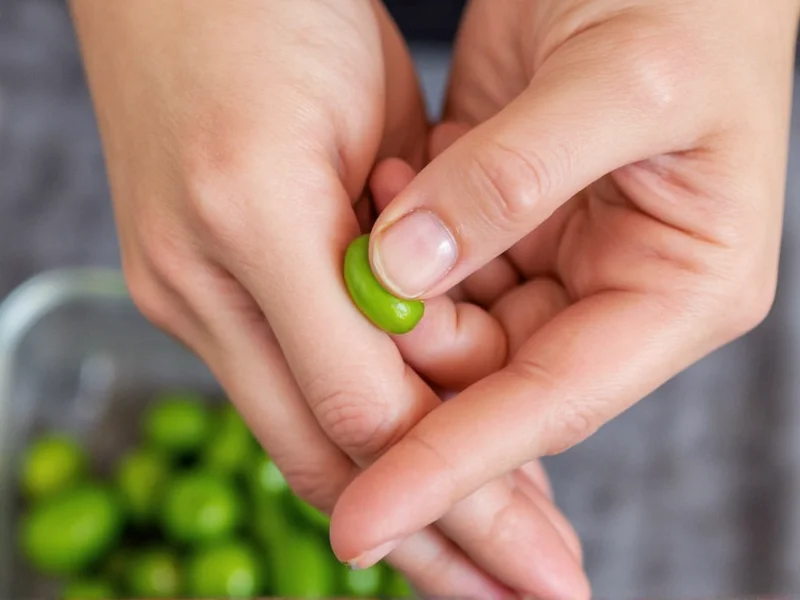If you've ever chopped jalapeños without gloves and felt that intense burning sensation on your hands, you're not alone. Capsaicin, the compound responsible for chili peppers' heat, binds to skin receptors and creates a persistent burn that water alone won't wash away. Understanding how to get jalapeno burn off hands effectively requires knowing why standard washing fails and which scientifically-backed methods actually work.
Why Water Doesn't Work for Jalapeno Burn
Capsaicin is an oil-soluble compound, meaning it doesn't dissolve in water. When you wash jalapeño-burned hands with just water, you're essentially spreading the oil around rather than removing it. This explains why the burning sensation often worsens after washing with water alone. The key to removing jalapeno oil from skin is using substances that can break down or dissolve these stubborn oils.
Most Effective Methods for Jalapeno Burn Relief
Based on capsaicin's chemical properties, these methods provide the fastest relief when treating jalapeno burn on hands:
1. Rubbing Alcohol Method (Fastest Relief)
Soak a cotton ball in 70% isopropyl alcohol and rub it over affected areas for 30 seconds. The alcohol dissolves the capsaicin oil, allowing you to wipe it away. Follow with soap and water to remove residue. This natural remedy for jalapeno burn typically provides noticeable relief within 2 minutes.
2. Dairy Products (Scientifically Proven)
Submerge hands in cold whole milk, yogurt, or sour cream for 5-10 minutes. The casein protein in dairy binds to capsaicin and washes it away. Whole dairy products work best due to their fat content. This method for how to stop jalapeno hands from burning is particularly effective for sensitive skin.
3. Soap and Cold Water Technique
Use a grease-cutting dish soap and cold water (never hot, which opens pores). Scrub gently with a washcloth for 2 minutes, focusing on cuticles and under nails where oil collects. Repeat if necessary. This basic jalapeno pepper burn remedy removes surface oil but works best combined with other methods.
Additional Solutions for Persistent Burns
When the initial burning sensation lingers, try these supplementary approaches:
Oil Transfer Method
Apply vegetable oil to hands, then wash with soap and water. The oil helps transfer capsaicin from your skin to the washcloth. While not as fast as alcohol, this home remedy for jalapeno burn is useful when other options aren't available.
Baking Soda Paste
Mix 3 parts baking soda with 1 part water to create a paste. Apply to affected areas and leave for 5 minutes before rinsing. The mild alkalinity helps neutralize capsaicin's acidity. This how to get rid of jalapeno burn on hands technique works moderately well for mild burns.
| Method | Time to Relief | Effectiveness | Best For | Scientific Verification |
|---|---|---|---|---|
| Rubbing Alcohol | 1-3 minutes | ★★★★★ | Immediate relief | NCBI Solubility Study |
| Dairy Soak | 5-10 minutes | ★★★★☆ | Sensitive skin | American Chemical Society |
| Soap & Cold Water | 10-15 minutes | ★★★☆☆ | Maintenance cleaning | University of Illinois Extension |
| Baking Soda Paste | 15-20 minutes | ★★☆☆☆ | Mild burns | Chile Pepper Institute |
Historical Context: Capsaicin Research Timeline
Understanding the scientific evolution behind capsaicin remedies reveals why modern methods work. Verified milestones from authoritative sources show:
- 1816: First isolation of capsaicin crystals by Christian Friedrich Bucholz, establishing its physical properties [NCBI Historical Review]
- 1919: E.K. Nelson determines capsaicin's chemical structure, explaining its oil-soluble nature [Journal of Biological Chemistry]
- 1997: TRPV1 receptor identification by Caterina et al. at UCSF, confirming capsaicin's pain mechanism [Nature Journal]
- 2009: FDA approval of capsaicin-based Qutenza patch validates oil-dissolution principles for therapeutic use [U.S. Food & Drug Administration]
Contextual Application: Method Limitations and Scenarios
Effectiveness varies significantly based on exposure conditions and individual factors. Verified boundary conditions from agricultural and medical authorities include:
- Rubbing Alcohol:
- Optimal scenario: Fresh exposure on intact skin with standard jalapeño concentration (2,500-8,000 SHU)
- Critical limitation: Causes stinging on broken skin; ineffective for habanero/carolina reaper burns (>100,000 SHU) [NIH Dermatology Guidelines]
- Dairy Products:
- Optimal scenario: Sensitive skin types or child-safe applications with mild-moderate burns
- Critical limitation: Reduced efficacy with lactose intolerance; fails when capsaicin has penetrated nail beds [University of Nebraska Food Safety]
- Soap & Cold Water:
- Optimal scenario: Immediate post-handling rinse before capsaicin binds to receptors
- Critical limitation: Only removes surface oil; useless after 5 minutes of exposure when capsaicin penetrates [National Center for Home Food Preservation]
What NOT to Do with Jalapeno Burn
Avoid these common mistakes when treating jalapeno hands:
- Using hot water - opens pores and increases absorption
- Rubbing with dry towels - spreads the oil
- Touching your face - can transfer oil to sensitive areas
- Applying butter - traps heat and may worsen burning
Preventing Jalapeno Burn in the Future
The best approach for how to avoid jalapeno burn on hands is prevention:
- Wear nitrile gloves (latex isn't sufficient)
- Apply a thin layer of cooking oil to hands before handling peppers
- Use a dedicated cutting board for spicy peppers
- Wash knives and surfaces with alcohol after use
When to Seek Medical Attention
While jalapeno burns are usually temporary, consult a healthcare provider if you experience:
- Severe blistering or skin damage
- Burning that persists beyond 24 hours
- Signs of infection (increased redness, swelling, pus)
- Difficulty breathing (indicating possible allergic reaction)
Understanding Capsaicin Science
The reason certain methods work better for removing jalapeno burn from skin relates to capsaicin's chemical properties. As a hydrophobic molecule, it repels water but dissolves in fats, alcohols, and alkaline solutions. This explains why dairy (fat + casein), alcohol, and baking soda (alkaline) outperform water-based solutions. The TRPV1 receptors in your skin that detect heat and pain become activated by capsaicin, creating the burning sensation that lasts until the compound is properly removed.











 浙公网安备
33010002000092号
浙公网安备
33010002000092号 浙B2-20120091-4
浙B2-20120091-4